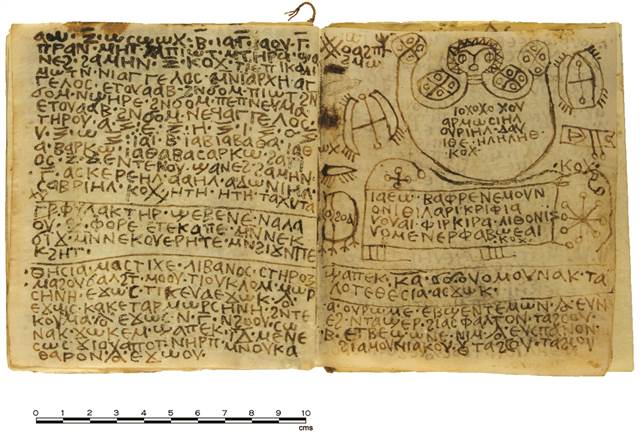World News – Australian researchers have deciphered an ancient Egyptian handbook, revealing a series of invocations and spells.
Among other things, the “Handbook of Ritual Power” tells readers how to cast love spells, exorcise evil spirits and treat “black jaundice,” a bacterial infection that is still around today and can be fatal.
The book is about 1,300 years old, and is written in Coptic, an Egyptian language. It is made of bound pages of parchment — a type of book that researchers call a codex.
“It is a complete 20-page parchment codex, containing the handbook of a ritual practitioner,” Macquarie University’s Malcolm Choat and the University of Sydney’s Iain Gardner write in their book, “A Coptic Handbook of Ritual Power” (Brepols, 2014).
They say the book includes “a number of prescriptions or spells to cure possession by spirits and various ailments, or to bring success in love and business.” For instance, to subjugate someone, the codex says you have to say a magical formula over two nails, and then “drive them into his doorpost, one on the right side (and) one on the left.”
Researchers believe that the codex may date to the 7th or 8th century. During this time, many Egyptians were Christian, and the codex contains a number of invocations referencing Jesus.
However, some of the invocations seem more associated with a group that is sometimes called “Sethians.” This group flourished in Egypt during the early centuries of Christianity and held Seth, the third son of Adam and Eve, in high regard. One invocation in the newly deciphered codex calls “Seth, Seth, the living Christ.” [The Holy Land: 7 Amazing Archaeological Finds]
The opening of the codex refers to a divine figure named “Baktiotha” whose identity is a mystery, researchers say. The lines read, “I give thanks to you and I call upon you, the Baktiotha: The great one, who is very trustworthy; the one who is lord over the forty and the nine kinds of serpents,” according to the translation.
The identity of the person who used this codex is a mystery, as is its origin. The style of writing suggests that the book originally came from Upper Egypt. It’s now housed in the Museum of Ancient Cultures at Macquarie University in Sydney.
— Owen Jarus, LiveScience

